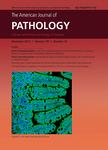版权所有:内蒙古大学图书馆 技术提供:维普资讯• 智图
内蒙古自治区呼和浩特市赛罕区大学西街235号 邮编: 010021

作者机构:Silesian Tech Univ Fac Biomed Engn Zabrze Poland Cedars Sinai Med Ctr Dept Pathol & Lab Med Los Angeles CA USA Cedars Sinai Med Ctr Dept Surg 8687 Melrose AveSte G-554 West Hollywood CA 90069 USA Cedars Sinai Med Ctr F Widjaja Inflammatory Bowel Dis Inst Los Angeles CA USA Cedars Sinai Med Ctr Biostat Shared Resource Los Angeles CA USA Cedars Sinai Med Ctr Biobank & Res Pathol Resource Los Angeles CA USA Silesian Tech Univ Fac Automat Control Elect & Comp Sci Gliwice Poland Mar Sklodowska Curie Natl Res Inst Oncol Tumor Pathol Dept Gliwice Branch Gliwice Poland Hosp Lung Dis Rebirth Zakopane Poland
出 版 物:《AMERICAN JOURNAL OF PATHOLOGY》 (Am. J. Pathol.)
年 卷 期:2025年第195卷第5期
页 面:907-922页
核心收录:
学科分类:1001[医学-基础医学(可授医学、理学学位)] 10[医学]
基 金:Student Science Club Projects Research University Program, (07/010/SDU/10-21-01) Congressionally Directed Medical Research Programs, CDMRP, (W81XWH2210632) Congressionally Directed Medical Research Programs, CDMRP
主 题:artificial intelligence computational pathology immunohistochemical staining lung adenocarcinoma restained slides tumor burden tumor cellularity assessment
摘 要:Tumor cellularity (TC) in lung adenocarcinoma slides submitted for molecular testing is important in identifying actionable mutations, but lack of best practice guidelines results in high interobserver variability in TC assessments. An artificial intelligence (AI)-based pipeline developed to assess TC in hematoxylin and eosin (H&E) whole slide images (WSIs) and in tumor areas (TAs) within WSIs includes a new model (CaBeSt-Net) trained to mask cancer cells, benign epithelial cells, stroma in H&E WSIs using immunohistochemistry-restained slides, and a model to detect all cell nuclei. High masking accuracy (91%) by CaBeSt-Net computed using 1024 H&E regions of interest and intraclass correlation coefficient 0.97 assessing TC assessments reliability by one pathologist and AI in 20 test regions of interest supported the pipeline s applicability to TC assessment in 50 study H&E WSIs. Using the pipeline, TCs assessed in TAs and WSIs were compared with those by three pathologists. Reliabilities of these ratings by the pathologists supported by the pipeline were good (intraclass correlation coefficient 0.82, P 0.0001). The consistency of sample categorizations as inadequate or adequate (TC = 20% cut point) for molecular testing among the pathologists assessing TCs without AI support was moderate in TAs (K = 0.410, P 0.0001) and slight in WSIs (K = 0.132, nonsignificant). With AI support, the consistency was substantial in both WSIs (K = 0.602, P 0.0001) and TAs (K = 0.704, P 0.0001). By visualizing cancer and measuring TC in the sample, this novel AI-based pipeline assists pathologists in selecting samples for molecular testing.